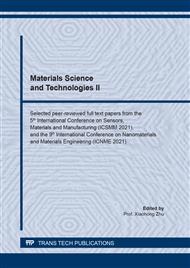p.127
p.135
p.141
p.149
p.157
p.165
p.175
p.183
p.193
Influence of Heating Stage Parameters on the Joint Strength of Rotary Friction Welded AISI 1045 and AISI 304 Steels: A Polynomial Model
Abstract:
Rotary friction welding (RFW) result is much affected by heating and joining stage parameters. Heating stage is the period where friction takes place to generate heat at the interface. Parameters that alter the heating are friction pressure, friction time and rotation speed. In this work, experiment of RFW AISI 1045 and AISI 304 under different friction pressure and friction time was carried out. The objective was to investigate the relation between those parameters with the welding strength. The experiments were performed using one-factor-at-a-time (OFAT) strategy. A polynomial model of relation between joint strength with friction pressure and friction time was developed. Welding efficiency of 81.7% from the AISI 304 base metal was attained. Optimum setting friction pressure of under constant friction time was 40 bar, whereas the optimum setting friction time under constant friction pressure was 5 seconds.
Info:
Periodical:
Pages:
157-163
Citation:
Online since:
April 2022
Authors:
Keywords:
Price:
Сopyright:
© 2022 Trans Tech Publications Ltd. All Rights Reserved
Share:
Citation:


